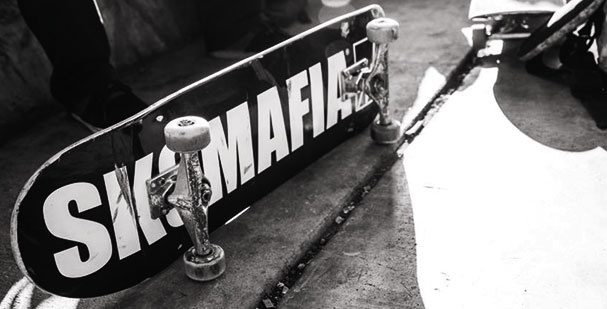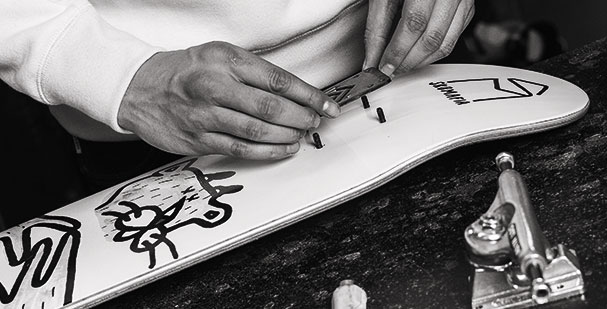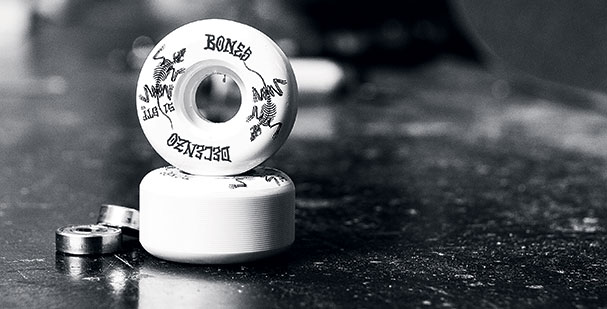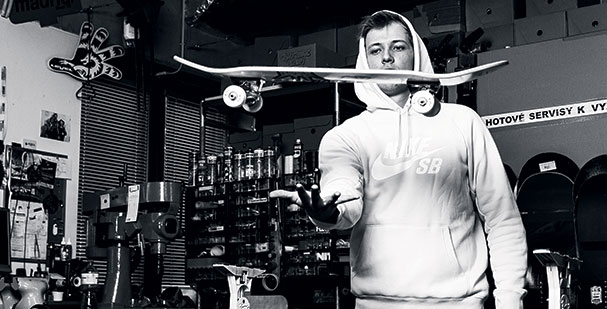With so many skateboards available on the market, it is not easy to choose the right one, especially if you are a beginner. That's why we've put together a complete guide to help you choose.
Starting with skateboarding? Choose a whole set
Your level of experience is an important indicator that you should consider when choosing a skateboard. Haven't spent much time on the skate yet, but you are ready to buy a board and work on the basics? We recommend getting the ready-made sets. These are assembled with everything you need. Just follow the width of the board.

How to choose your skate deck
Deck is the most important part of a skateboard. It's the only part in direct contact with your foot, so it's important to choose the ideal one in every way. Width, profile (concave) - both of these attributes should be taken into account.
The width of the skateboard determines the riding style
When choosing a skate deck, you need to focus on width more than anything else. It's what determines what style of riding it's suitable for.
Board width - riding style:
- 7,5"- 8" - riding in the park
- 8"- 8,25" - park/street
- 8,25" and more - street/pool
Each board behaves a little differently. Narrow ones are faster in the trick, wider ones are a bit more stable in the ride and impacts. The right width is individual, every rider prefers something different, so finding the right one can take a little time.
Material
The most commonly used material is Canadian maple. The board is constructed of several veneers, usually seven, which are layered perpendicular to each other. Boards with more than seven layers are stronger but heavier.
Bending (concave) allows better control over the board
An important feature of the skateboard is its deflection into the "U" shape. The concave allows precise placement of the feet, better control of the board, faster execution of tricks and more. The concave is divided into three classes - Mellow, Medium, High.
Shape
Each board has a nose and a tail. Mostly, the nose is slightly longer than the tail. Longer nose is better for tricks like nollie and shorter nose will make a better pop.

How to choose trucks
Trucks are an indispensable part of the skateboard. When transferring your weight, the trucks indicate the direction of ride, i.e. where you transfer the weight, the truck turns. That's why their selection is very important.
The truck is made up of the main parts such as the baseplate, kingpin, hanger and axle, where we are most interested in their weight. All these components should be as light as possible and of course as durable as possible. Since they are often used in tricks like grinding (riding on the truck).
Choose the size of the trucks according to the width of the deck, i.e. the central axis of the trucks (axle), which holds the wheels, should correspond to the width of the deck. Therefore, if you have an 8-inch deck, then choose 8-inch trucks..
Trucks are divided into three categories due to different wheel heights:
- Low - trucks for small wheels, low trucks offer extraordinary stability, we recommend low trucks for wheel sizes from 50 to 53 mm.
- Mid - ideal for park or street, medium size is ideal for wheel size 53-56 mm.
- High - for large wheels, suitable for cruising, carving, wheels with 56 mm or more.
* Every manufacturer of skateboard trucks can have different categories.
When choosing trucks, the hardness of the bushings, called rubber bands, is also important. The hardness of the bushings affects how the skate will react to the turn when transferring weight. Soft ones turn well but are harder to keep stable, which is why they are mainly used for carving and cruising. Hard bushings are more stable.

How to choose wheels
Wheels have a huge impact on speed, stability and the overall riding experience. They are usually made of polyurethane because it is the only one that is durable and rides. However, the lifespan of each wheel is limited and directly proportional to how often you ride. If you want to keep them as long as possible, it's a good idea to swap them out on your board. Because they take the most abuse on the side where your heels are. One of the basic parameters of wheels is size. It's given in millimeters and hardness (durometer). Both factors are a matter of personal preference and what you intend to do on the skate.
Wheel size
Small wheels have a lower weight and faster pop, because you have a tail near to the ground and you do not have to reflect as much. Larger wheels provide more stable ride and they better get over with road inequality. Larger wheels are faster.
- 50-53 mm - small, slower wheels, street, skatepark and bowl
- 54-59 mm - average size for beginners and more advanced riders, best suited for street, bowl and ramps
- 60 mm - made for cruising and rough surfaces.
Hardness of wheels determines speed and grip
Material hardness is also a parameter to consider when choosing the right set of wheels. Durometer measures hardness of wheels. Most manufacturers use the hardness renge A, a 103-point renge that indicates how hard the wheel is. Some manufacturers use the B renge, which measures 20 points below. For example, hardness 80b is the same as 100a.
In general, harder wheels are faster and softer are slower, but the softer provide better grip and are more suitable for street skaters. Harder wheels are for smooth surfaces, like skate parks. Some brands even design special wheels for a particular use. E.g. Bones STF Formula for street terrain, while Bones SPF for park terrain.
- 103-101a - hard wheels for park/street riding
- 101-99a - street/bowl
- 99 and less - cruising
Maintenance of wheels
How often you have to change wheels depends on how much and often you will skate. Wheels gradually wear out, the diameter decreases and "platforms" are created. Therefore it is necessary to check them regularly and replace them when needed.
In order to complete the skateboard, it is necessary to stick it with grip with a rough surface, which makes it easier to use when you do tricks.

How to choose bearings
Skateboard bearings are round metal balls that fit inside the wheel. The bearings are always the same size. The only difference is the ABEC categories, from 1 to 9. These categories do not tell anything about their quality, only about accuracy of production as well as its speed. The higher number says that the skate will go faster and better.
Bearings on the whole set need the most of your care, so we must not forget to clean and lubricate them.
- ABEC 1 - bearings are the cheapest, the most crude, and the least accurate. Steel quality is not too high.
- ABEC 3 - are generally inexpensive, but they also allow a smooth and fast ride.
- ABEC 5 - standard for most types of skateboarding. Higher speed at an affordable price.
- ABEC 7 - very fast, longer keeps constant speed, so it is better suited to the pool.
Skateboard hardware
Skate hardware is used to attach the trucks to the board. Each truck needs four screws and lock nuts. The length of the screws you will need depends on which style of riding you prefer. Skateboard hardware is available in many different lengths and often contains one different colored screw which you can use to mark nose of your skateboard. Hardware will certainly be useful over time as well as other screws. If you find out that the screws are dropping or that they are rusty, it's time to invest in a new set.

And if you feel like putting it all together by yourself, check out the video!












